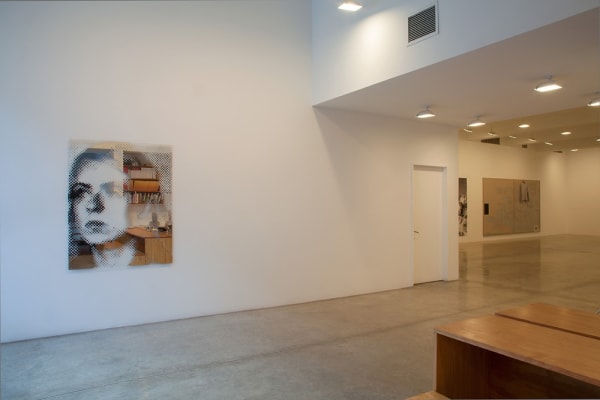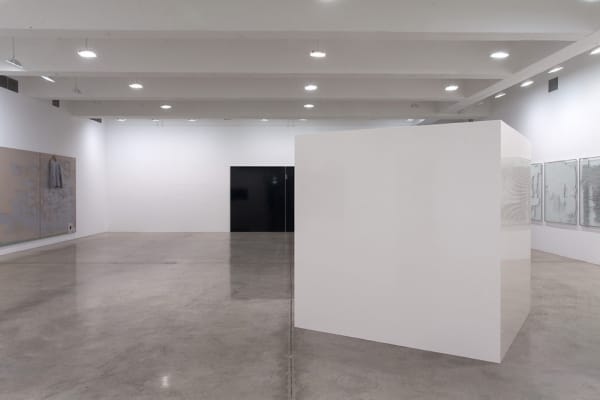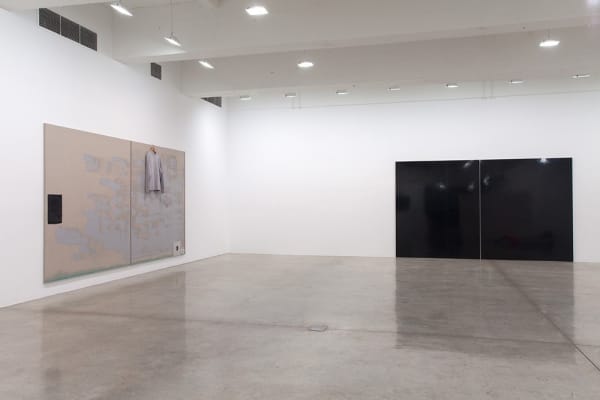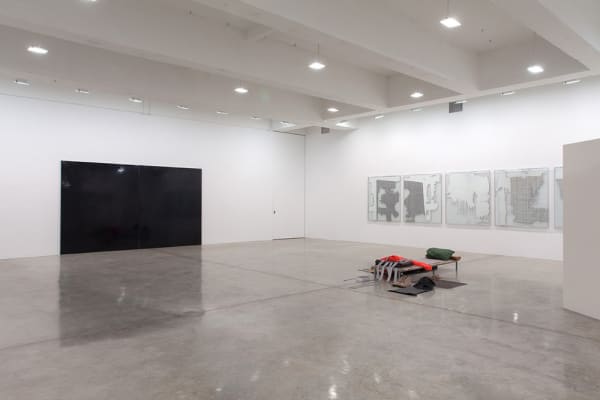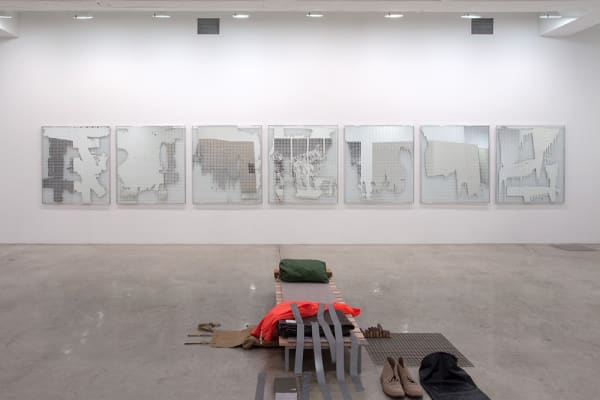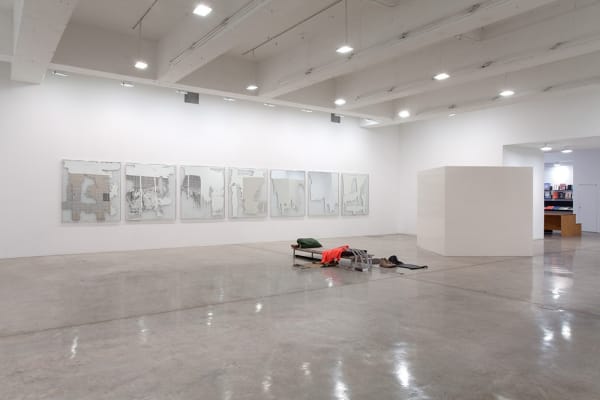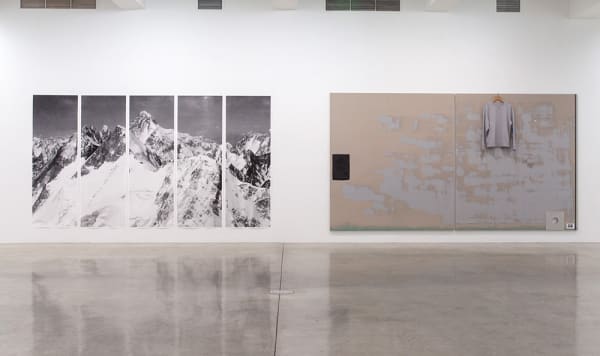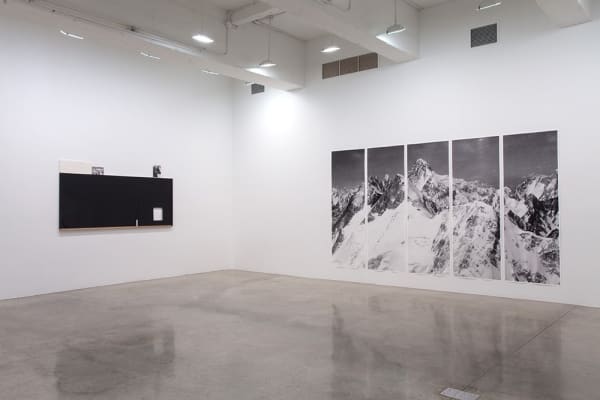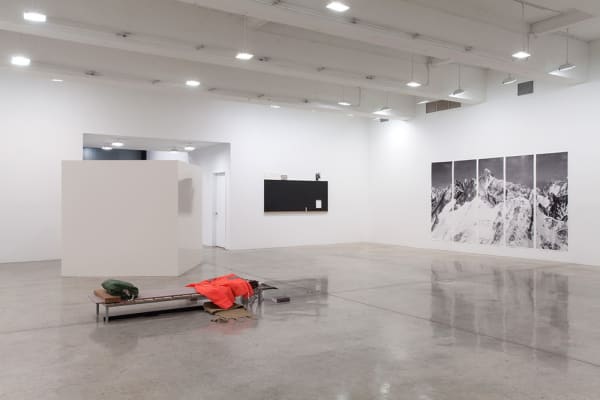MICHAEL WILKINSON: CITADEL: THE FORTRESS COMMANDING A CITY, WHICH IT SERVES BOTH TO PROTECT AND TO DOMINATE.: Tanya Bonakdar Gallery, New York
Furthering his experiments with collage as a formal and conceptual tool, Wilkinson’s latest sculptures and canvases examine notions of power and resistance through an intricate web of political, cultural, and personal references. Influenced by the histories of art and political radicalism, Marxist theory, popular music, and punk subculture of the 1970s and 1980s, the artist collects, dissects, and reproduces his source material in evocative ways. Subtly-layered, his compositions frequently operate through oppositions that probe ideas of interior and exterior, representation and reality, the monumental and the insignificant and work to restructure understandings of the past along with their manifestations in the present.
As a starting point for the exhibition, Wilkinson engages with the notion of capitalism as terrain, specifically a mountain. Drawing from books, found photographs, and advertisements, the artist often incorporates mountaineering imagery and equipment into his work to as symbols of power and capital, a concept inspired by the cover of Leaving the Twentieth Century, an anthology of writings published by the influential twentieth century revolutionary group, the Situationist International. In his work Gasherbrum, Wilkinson combines this reference with an image from a book by famous climber and author Reinhold Messner. The artist has enlarged the original photo and printed in long vertical strips to create the effect of an exterior seen through bars. As the half-tone dots become a visible part of the work, the viewer is at odds with the immense scale of the mountain and must choose between reading the dots and reading the image itself. The subject is simultaneously too close and too far.
The largest work in the show titled Citadel represents, as the title of the show implies, both protection and domination. Constructed using 53,000 white Lego bricks, this work functions as a structure of power, the main hub or shelter, but conversely, a prison cell. Similar to other sculptures in this body of work, like Black Wall 14, a large diptych made of all black Lego bricks, Wilkinson recreates archetypal forms such as cubes and wall panels that echo Minimalist tradition. These works act as walls or barriers, a motif that surfaces frequently in the artist’s work, derived in part from Pink Floyd's The Wall and more fundamentally from the Marxist concept of reification.
In contrast to Citadel, Wilkinson presents Endnotes, a deconstructed floor installation reminiscent of a prisoner’s cot, made up of an orange cagoule, a mattress of wool felt, a pillow made from a hospital laundry bag, a pair of desert boots, a piece of steel grill, wooden offcuts, a lens cover, a family photograph, volumes of the Communisation journal 'Endnotes' 1-3, and strips of reflective tape. If the logical facade of Citadel suggests a conscious self, Endnotes follows the logic of the dream, an unraveled set of associations, both personal and historical. Wilkinson presents notions of power and capital through a more intimate, humanizing lens, juxtaposing this work as a shelter to the mountain, a protester's camp to the citadel.
On the opposite wall, a series of seven caged etched mirrored panels, entitled Real Abstraction (mirror) 1-7, are presented like shop windows. Referencing the exterior of the 1970s London shop Seditionaries, famously owned by Punk impresario Malcolm McLaren and then girlfriend Vivienne Westwood, the metal grill has been reconfigured as a graph. As the viewer looks through the cage, they catch glimpses of their reflections partly revealed through the etched mirror as if they're inside, looking out.
All installation images above: Photo by Jean Vong
